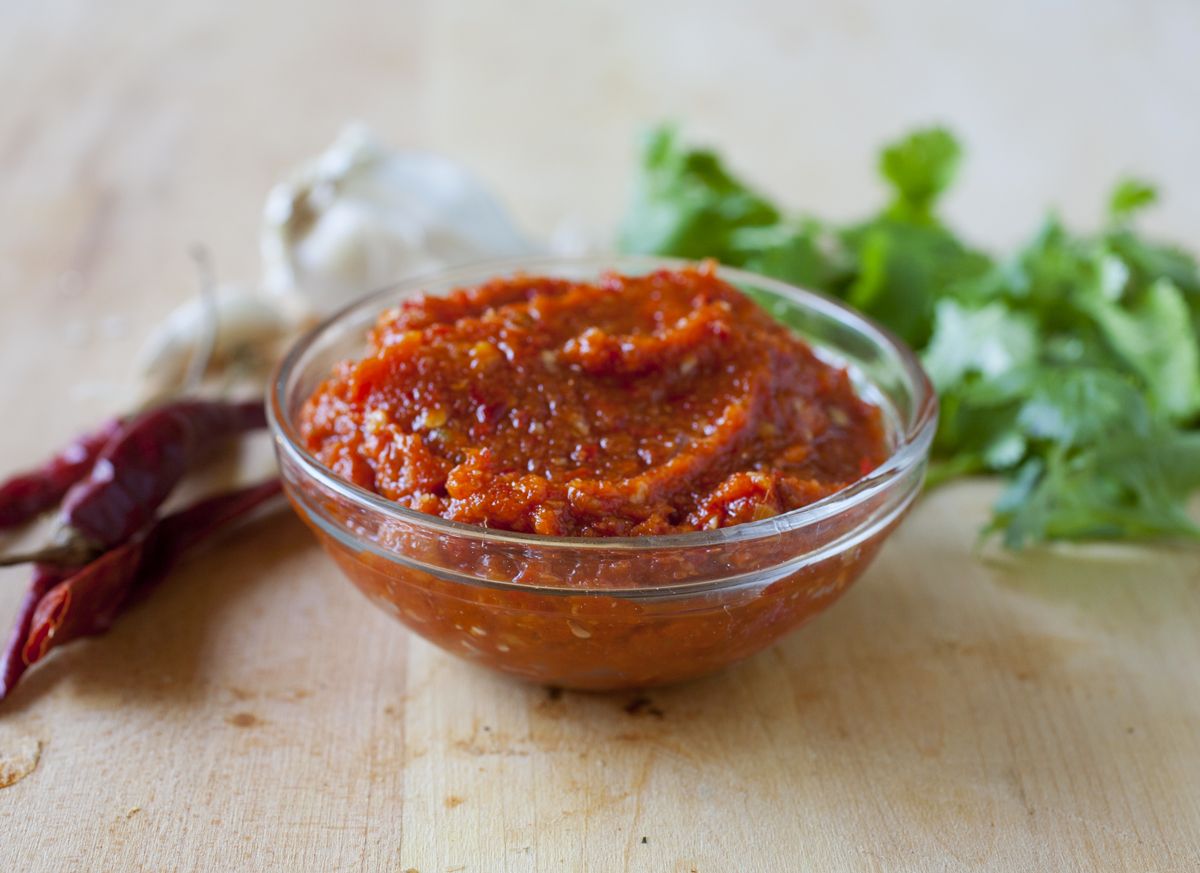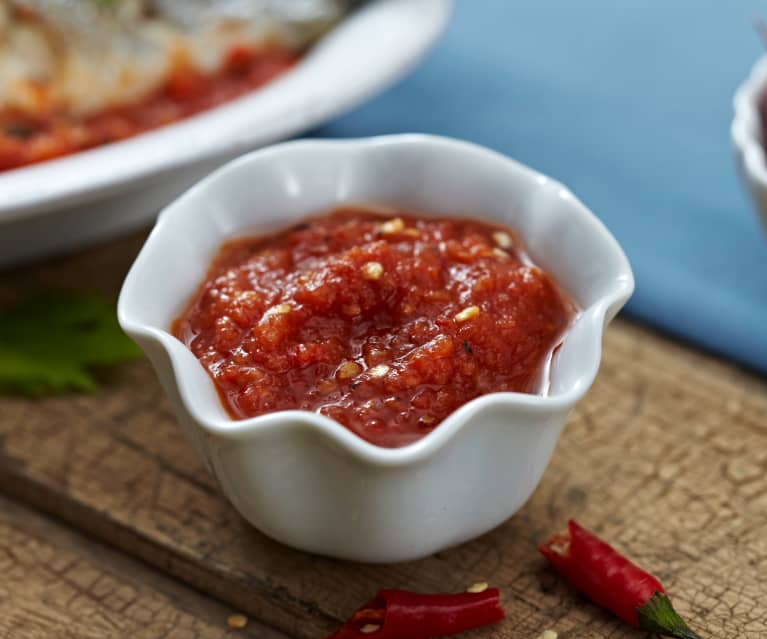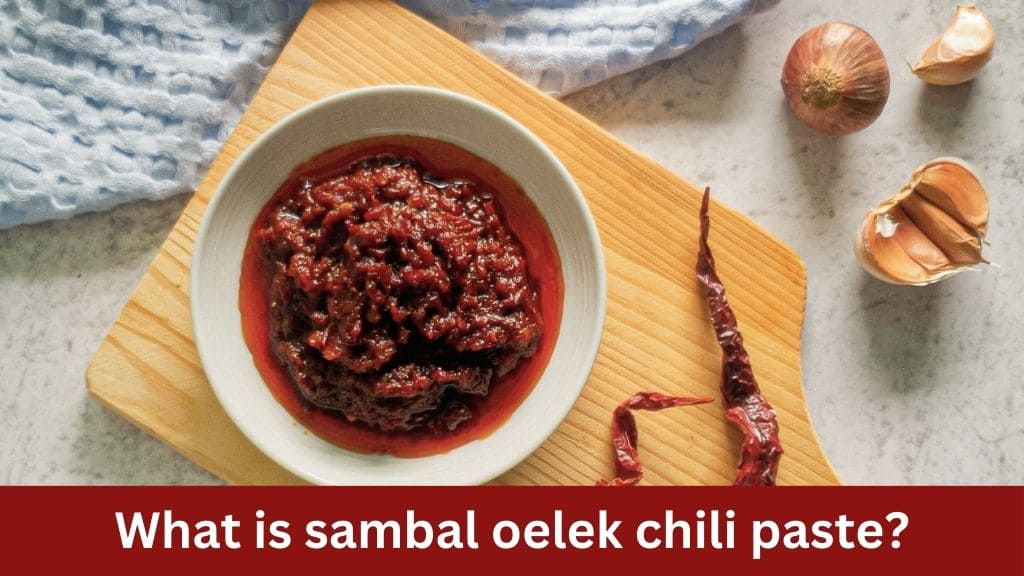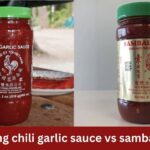In the vast and diverse realm of culinary delights, few condiments possess the versatility and flavor profile of sambal oelek chili paste. Originating from the vibrant cuisines of Indonesia and Malaysia, sambal oelek has captured the attention of food enthusiasts worldwide. But what exactly is sambal oelek? In this comprehensive guide, we delve deep into the origins, ingredients, flavor profile, and common uses of this fiery chili paste.
What is Sambal Oelek?

Sambal oelek is a beloved condiment in Indonesian and Malaysian cuisine, renowned for its bold and spicy flavor. Derived from the Indonesian word “sambal” meaning chili paste, and “oelek” which refers to the traditional mortar and pestle used in its preparation, sambal oelek embodies the essence of Southeast Asian culinary traditions.
Sambal oelek traces its roots back to Indonesia, where it has been a staple condiment for centuries. Its popularity has since spread throughout Southeast Asia and beyond, earning a cherished place in global culinary culture. Indonesians and Malaysians often consider sambal oelek as more than just a condiment but as an essential component that adds depth and heat to a wide array of dishes.
Ingredients and Preparation

At its core, sambal oelek is a simple yet potent concoction crafted from a handful of key ingredients.
Ingredients
Sambal oelek typically consists of four primary ingredients:
- Red Chilies: These vibrant peppers are the star of the show, providing the fiery heat and bold color that characterize sambal oelek. The choice of chilies can vary, with some recipes calling for milder varieties while others opt for more potent ones to intensify the heat.
- Salt: A crucial component for seasoning, salt not only enhances the flavor of the chili paste but also acts as a natural preservative, extending its shelf life and preventing spoilage.
- Vinegar: Adding acidity and tanginess, vinegar serves to balance the heat of the chilies and impart a bright, zesty flavor to the sambal oelek. Different types of vinegar may be used, ranging from white vinegar to rice vinegar, each contributing its unique nuances to the final taste.
- Water: Often included to adjust the consistency and texture of the chili paste, water helps to achieve the desired thickness and spreadability of sambal oelek. It also aids in blending the ingredients together smoothly, ensuring a uniform and cohesive mixture.
Preparation
The traditional preparation of sambal oelek involves a meticulous process that requires skill and patience:
- Selecting and Preparing the Chilies: Choose ripe red chilies with a vibrant color and firm texture. Remove the stems and seeds if desired, depending on the desired level of spiciness. Some recipes may call for soaking the chilies in water beforehand to soften them and reduce their intensity.
- Grinding the Ingredients: Using a mortar and pestle known as “ulek-ulek,” grind the chilies, salt, vinegar, and water together into a thick paste. This traditional method allows for greater control over the texture and consistency of the sambal oelek, resulting in a more authentic and flavorful final product.
- Adjusting Seasoning: Taste the chili paste and adjust the seasoning as needed, adding more salt or vinegar to achieve the desired balance of flavors. Some recipes may also incorporate additional ingredients such as garlic, sugar, or spices to enhance the complexity of the sambal oelek.
- Storing and Serving: Transfer the sambal oelek to a clean, airtight container and store it in the refrigerator to preserve its freshness. Serve alongside your favorite dishes as a flavorful condiment or use it as an ingredient in marinades, sauces, and other culinary creations.
Traditional Preparation
Traditionally, sambal oelek is prepared using a mortar and pestle known as “ulek-ulek.” The process involves grinding together the red chilies, salt, vinegar, and water until a thick and fragrant paste is formed. This traditional method not only ensures an authentic flavor but also allows for customization according to individual preferences.
Flavor Profile

The allure of sambal oelek lies in its captivating flavor profile, which tantalizes the taste buds with a perfect balance of sweetness, tanginess, and spiciness.
Sweetness
- The sweetness in sambal oelek comes primarily from the ripe red chilies used in its preparation. These chilies impart a natural sweetness that balances the fiery heat of the paste.
- Unlike artificial sweeteners or added sugars, the sweetness in sambal oelek is subtle and nuanced, enhancing the overall flavor profile without overpowering the palate.
- This inherent sweetness adds depth and complexity to the chili paste, creating a harmonious blend of flavors that tantalize the taste buds.
Tanginess
- The tanginess of sambal oelek is derived from the addition of vinegar during the preparation process. Vinegar adds acidity to the paste, imparting a bright and zesty flavor.
- This tangy undertone serves to balance the heat of the chilies, creating a well-rounded and harmonious taste experience.
- The acidity of the vinegar cuts through the richness of savory dishes, enhancing their flavor and adding a refreshing dimension to the overall culinary experience.
Spiciness
- Undoubtedly, the hallmark of sambal oelek is its fiery spiciness, which ignites the palate with each fiery bite.
- The level of spiciness can vary depending on factors such as the type of chilies used and personal taste preferences.
- While sambal oelek is known for its heat, it is not overwhelmingly spicy, allowing for enjoyment by individuals with varying levels of spice tolerance.
- The heat of sambal oelek lingers on the palate, imparting a satisfying warmth that enhances the overall flavor profile of dishes.
Complexity
- What sets sambal oelek apart is the complex interplay of its various flavor components. The combination of sweetness, tanginess, and spiciness creates a multi-dimensional taste experience that evolves with each bite.
- Each ingredient contributes its unique nuances to the flavor profile, resulting in a chili paste that is both bold and balanced.
- The complexity of sambal oelek makes it a versatile ingredient, capable of elevating a wide range of dishes and cuisines.
- Whether used as a condiment, marinade, or ingredient in recipes, sambal oelek adds depth and intensity to culinary creations, making it a beloved staple in kitchens around the world.
Common Uses

Traditional Indonesian and Malaysian Cuisine
- In its countries of origin, sambal oelek is a staple condiment that is ubiquitous in traditional dishes. It is often served alongside rice, noodles, and various meat and vegetable dishes.
- Indonesians and Malaysians use sambal oelek as a flavor enhancer, adding a spicy kick to classic recipes such as nasi goreng (fried rice), mie goreng (fried noodles), and rendang (spicy beef stew).
- Sambal oelek is also commonly used as a dipping sauce for snacks and appetizers, adding depth and heat to dishes like fried tofu, spring rolls, and satay skewers.
Global Culinary Fusion
- Beyond Southeast Asia, sambal oelek has found its way into diverse culinary landscapes, where it is celebrated for its bold and versatile flavor.
- In Western cuisine, sambal oelek serves as a delightful addition to marinades, sauces, and dips, adding a spicy kick to everything from grilled meats to seafood dishes.
- Chefs and home cooks around the world experiment with sambal oelek in fusion dishes, incorporating it into tacos, burgers, pizzas, and other inventive recipes to add a unique twist to familiar flavors.
Creative Culinary Applications
- The culinary possibilities with sambal oelek are endless, inspiring chefs and home cooks alike to think outside the box and experiment with new and innovative recipes.
- Sambal oelek can be used to add depth and intensity to soups, stews, and curries, infusing them with a rich and spicy flavor.
- It can also be mixed into salad dressings, spreads, and dips, adding a fiery kick to dishes like guacamole, hummus, and aioli.
- Adventurous cooks may even incorporate sambal oelek into sweet treats such as chocolate desserts or fruit salsas, creating a unique fusion of flavors that tantalizes the taste buds.
Conclusion
Sambal oelek chili paste stands as a testament to the rich culinary heritage of Indonesia and Malaysia, captivating taste buds with its bold flavor and fiery heat. Whether enjoyed as a traditional condiment or incorporated into innovative culinary creations, sambal oelek continues to reign supreme as a beloved ingredient in kitchens around the world. So, the next time you crave a spicy kick, reach for a jar of sambal oelek and embark on a culinary adventure that is sure to ignite your senses.





